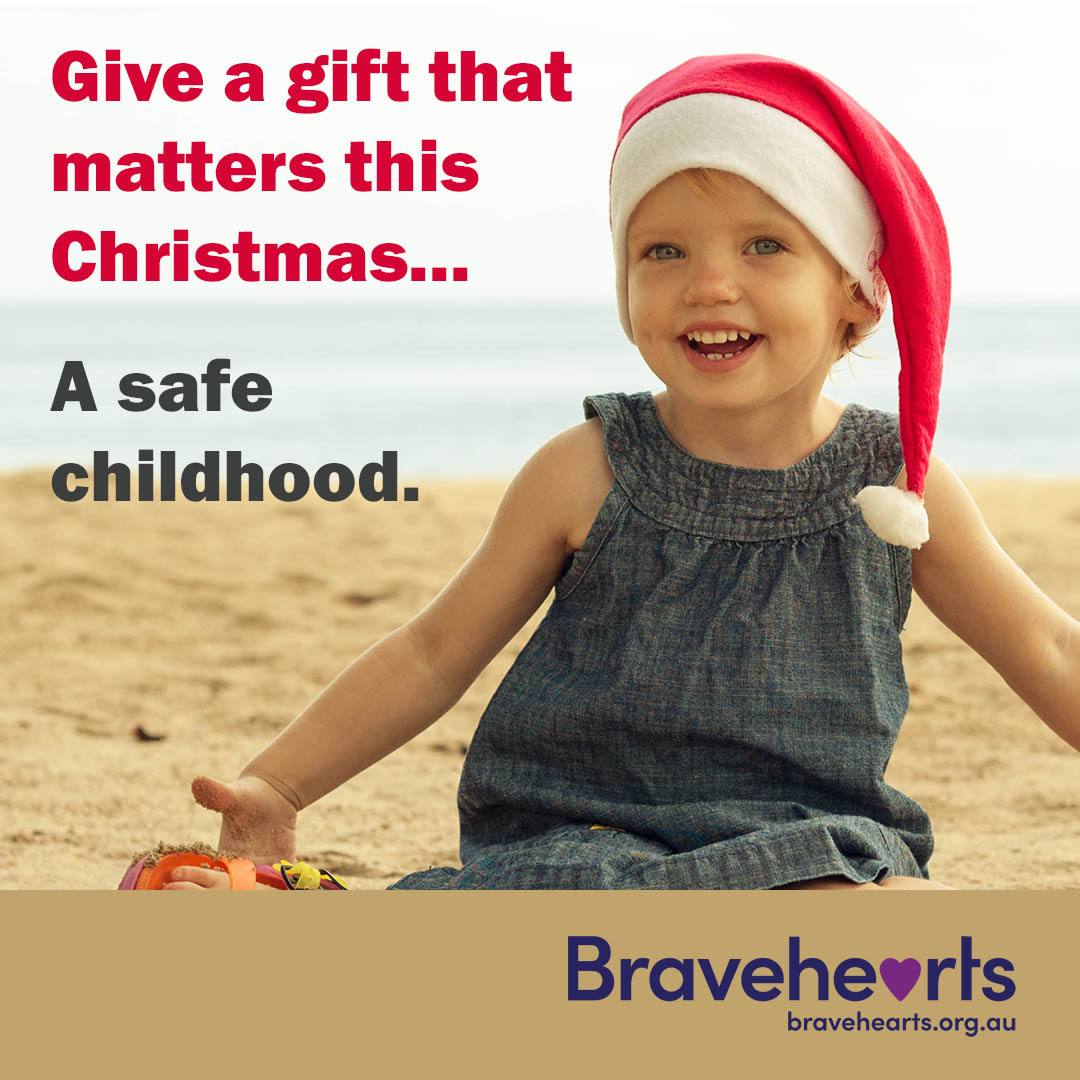Research + Reform
-
Stats & Facts
- Prevalence of child sexual abuse
- Nature of child sexual abuse: risk factors & dynamics
- Disclosure of child sexual abuse
- Harmful sexual behaviours (incl. peer-instigated abuse)
- Child sex offenders
- Convicting, treating & managing child sex offenders
- Child sexual abuse & religious organisations
- The impact of child sexual abuse
- The cost of child sexual abuse
- Child sexual abuse: prevention & education
- Community views on child sexual abuse
- Online risks, child exploitation & grooming
- Research
- Reform & Submissions
Helpful Links
- Home > Research + Reform > Stats & Facts > Child sexual abuse: prevention & education
Child sexual abuse: prevention & education
A systematic scoping review of sexual abuse prevention strategies (excluding protective behaviours education) found three common approaches are typically used: engaging and stopping those who are at risk of harmful or abusive sexual behaviours; situational prevention in child and youth serving organisations; and preventing the emergence of sexual abuse by promoting healthy families and communities (Vosz, McPherson, Tucci, et al., 2022).
Primary prevention
A meta-analytic review of child sexual abuse prevention programs published between 2014 and 2021 (including all programs that measured change in knowledge of child sexual abuse in one or more samples of participants) found an overall large effect size with significant improvements in participants’ knowledge following participation in prevention programs (Ferragut, Cerezo, Ortiz-Tallo, & Rodriguez-Fernandez, 2023).
Research with Australian university students examined whether having received school-based child sexual abuse prevention programming was associated with experiencing sexual abuse. This research found that school-based child sexual abuse prevention attendance was reported by 29% of respondents, while 72% reported parent-led CSA education. Almost one quarter (24%) of participants reported CSA. Parent-led CSA education was found to be significantly associated with lower risk of CSA, but school-based child sexual abuse prevention attendance was not. The results of this research highlight the importance of protective parenting, and of building parenting capacity as part of CSA prevention efforts (Rudolph, Zimmer-Gembeck, & Walsh, 2022).
While the majority of primary prevention efforts targeting school-aged children have focused on protective behaviour to prevent victimisation, Letourneau and colleagues (2017) report on the development of a school-based universal prevention program focusing on the prevention of juvenile offending. The program, Responsible Behavior with Younger Children, aims to prevent the onset of inappropriate, harmful or illegal sexual behaviour by adolescents against younger children. A pilot conducted in four urban schools in the US found that program participation was associated with increased accuracy in knowledge about sexual abuse and related laws, and with increased behavioural intention to avoid or prevent sexual abuse with younger children and peer sexual harassment (Letourneau, Schaeffer, Bradshaw, Ruzicka, Assini-Meytin et al., 2022).
A 2017 Google survey of just over 200 teachers found that teachers thought that online safety (not limited to online sexual harm) should be taught from the age of seven and “82 per cent of the teachers did not think they had all of the resources they needed” to teach online safety to their students (cited by the Independent Inquiry into Child Sexual Abuse, 2020).
Minimal research has examined the impact of exposure to school-based education programs on disclosure of child sexual abuse. A recent study did however examine the impact of exposure to the U.S. Think First and Stay Safe abuse prevention program on abuse disclosure rates of 319 children who underwent a child forensic interview in a Midwestern child advocacy center. The research found that children exposed (vs. not exposed) to the Think First and Stay Safe program were significantly more likely to disclose abuse during the forensic interview, which in turn predicted significantly increased abuse substantiation likelihood (Elfreich, Stevenson, Sisson, Winstead, & Parmenter, 2020). The impact of education programs on informal disclosures (i.e. outside of forensic interviews) is not currently understood.
A qualitative study with trainers of a US school-based physical and sexual abuse prevention program, which explored program and school-related factors that they believed influence children’s disclosure, showed that key factors perceived to influence disclosure were appropriate time being allocated to the program, incorporation of key messages (including “it’s not your fault”, “telling a trusted adult”, and “it’s never too late to tell”), provision of specific examples, and repetition of key messages and the program itself (Blakey, Glaude & Jennings, 2019).
The Stop it Now! Wales program is based on a range of educational programs for parents and professionals that challenge the stereotyped characteristics of perpetrators and provide skills and knowledge that enable the prevention of child sexual abuse. A recent evaluation of Stop it Now! Wales showed that both parents and professionals saw benefit in the program, with parents showing a 21% improvement in overall confidence to protect children compared to a 17% improvement among professionals (Hudson, 2018).
Three types of primary prevention approaches have been developed: those that aim to raise awareness and change wider social attitudes and norms to child sexual abuse, those that aim to reduce the risks and vulnerabilities of children as potential victims, and those that address situational factors, for example, within organisational settings (Radford, Richardson Foster, Barter & Stanley, 2017).
Secondary intervention
Assini-Meytin and colleagues (2020) discuss the need for a comprehensive approach to child sexual abuse prevention that includes approaches which specifically target potential perpetrators and the onset of offending behaviours. Such approaches include self-help interventions for people with sexual interest in children, universal school-based interventions targeting the onset of youth problem sexual behaviour, and changes to organisational contexts that reduce the likelihood of abuse (Assini-Meytin et al., 2020).
Tertiary intervention
Quadara and colleagues (2015) also discuss two examples of tertiary prevention programs, including Circles of Support and Accountability (COSA) and the Good Lives model.
- COSA, which was established in Canada 15 years ago, aims to support released child sexual offenders through group and individual meetings, help them find employment and housing, and reintegrate them back into society after their period of incarceration. Results indicate that offenders who have been part of COSA have between a 70% and 83% lower chance of sexual reoffending than those who did not partake in the group (Finkelhor, 2009; Wilson, Cortoni, & McWhinnie, 2009). The program is now available in the UK and the USA, and a trial is being conducted in South Australia (Worthington, 2015).
- The Good Lives framework, as proposed by Ward and Gannon (2006), aims to understand offending within a broader concept of unmet needs or frustrations with satisfying universal human needs. The treatment is focused on building the offender’s self-esteem, self-confidence and sense of hope so they can work towards a better life that is free from child sexual abuse
Contextual prevention
There is growing recognition of the contextual dynamics of child sexual abuse, with a developing evidence base supporting it, sparking calls to ensure prevention efforts are contextualised. Contextual approaches extend the focus of prevention beyond the individual, to include immediate situations, and the physical and social contexts in which abuse occurs, comprising prevention efforts that target factors external to the individual (potential victim or perpetrator), to create safer environments for children. Strategies include addressing social determinants of abuse, enhancing formal regulatory controls, crime prevention through environmental design and situational crime prevention (Rayment-McHugh et.al., 2024).
The influence of contextual factors on human behaviour has long been acknowledged. Dating back to the 1960s, research within social psychology revealed the power of situations to influence human behaviour, including the capacity of ‘normal’ people to engage in ‘abnormal’ behaviour under certain circumstances. From an ecological perspective, community psychology focuses on community history, values and beliefs, resources, challenges and opportunities to better understand behaviour and to intervene at this systemic level to improve conditions and outcomes. Bronfenbrenner extended the ecological focus to human development. He contended that human behaviour is influenced by successive ecological systems in which an individual is socially embedded, including family, peer, school, neighbourhood and sociocultural systems (Rayment-McHugh et.al., 2024).
References
Assini-Meytin, L.C., Fix, R.L., & Letourneau, E.J. (2020). Child sexual abuse: The need for a perpetration prevention focus. Journal of Child Sexual Abuse, doi: 10.1080/10538712.2019.1703232.
Blakey, J.M., Glaude, M., & Williams Jennings, S. (2019). School and program related factors influencing disclosure among children participating in a school-based childhood physical and sexual abuse prevention program. Child Abuse & Neglect, 96, 104092.
Elfreich, M.R., Stevenson, M.C., Sisson, C., Winstead, A.P., & Parmenter, K.M. (2020). Sexual abuse disclosure mediates the effect of an abuse prevention program on substantiation. Child Maltreatment, 25(2), 215-223.
Ferragut, M., Cerezo, M.V., Ortiz-Tallo, M., & Rodriguez-Fernandez, R. (2023). Effectiveness of child sexual abuse prevention programs on knowledge acquisition: A meta-analytical study. Child Abuse & Neglect, 146, doi: 10.1016/j.chiabu.2023.106489.
Hudson, K. (2018). Preventing child sexual abuse through education: The work of Stop it Now! Wales. Journal of Sexual Aggression, 24(1), 99-113.
Independent Inquiry into Child Sexual Abuse (2020). The internet: Investigation report. IICSA, UK.
Letourneau, E.J., Schaeffer, C.M., Bradshaw, C.P., & Feder, K.A. (2017). Preventing the onset of child sexual abuse by targeting young adolescents with universal prevention programming. Child Maltreatment, 22(2), 100-111.
Letourneau, E.G., Schaeffer, C.M., Bradshaw, C.P., Ruzicka, A.E., Assini-Meytin, L.C., Nair, R., & Thorne, E. (2022). Responsible Behavior with Younger Children: Results from a pilot randomized evaluation of a school-based child sexual abuse perpetration prevention program. Child Maltreatment, DOI: 10.1177/10775595221130737.
Radford, L., Richardson Foster, H., Barter, C., & Stanley, N. (2017). Rapid evidence assessment: What can be learnt from other jurisdictions about preventing and responding to child sexual abuse. Connect Centre for International Research on Interpersonal Violence School of Social Work, Care & Community, University of Central Lancashire.
Rayment-McHugh, S., McKillop, N., Adams, D., Higgins, D. & Russell, D. (2024). Context matters: Conceptualising and operationalising the contextual prevention of child sexual abuse. Child Abuse Review, 33, doi: https://doi.org/10.1002/car.2859)
Rudolph, J., Zimmer-Gembeck, M., & Walsh, K. (2022). Recall of sexual abuse prevention education at school and home: Associations with sexual abuse experience, disclosure, protective parenting, and knowledge. Child Abuse & Neglect, 129, DOI: 10.1016/j.chiabu.2022.105680
Vosz, M., McPherson, L., Tucci, J., Mitchell, J., Fernandes, C., Macnamara, N. (2022). It is time to focus on prevention: A scoping review of practices associated with prevention of child sexual abuse and Australian policy implications. International Journal on Child Maltreatment, doi: 10.1007/s42448-022-00143-8.
 BACK
BACK


